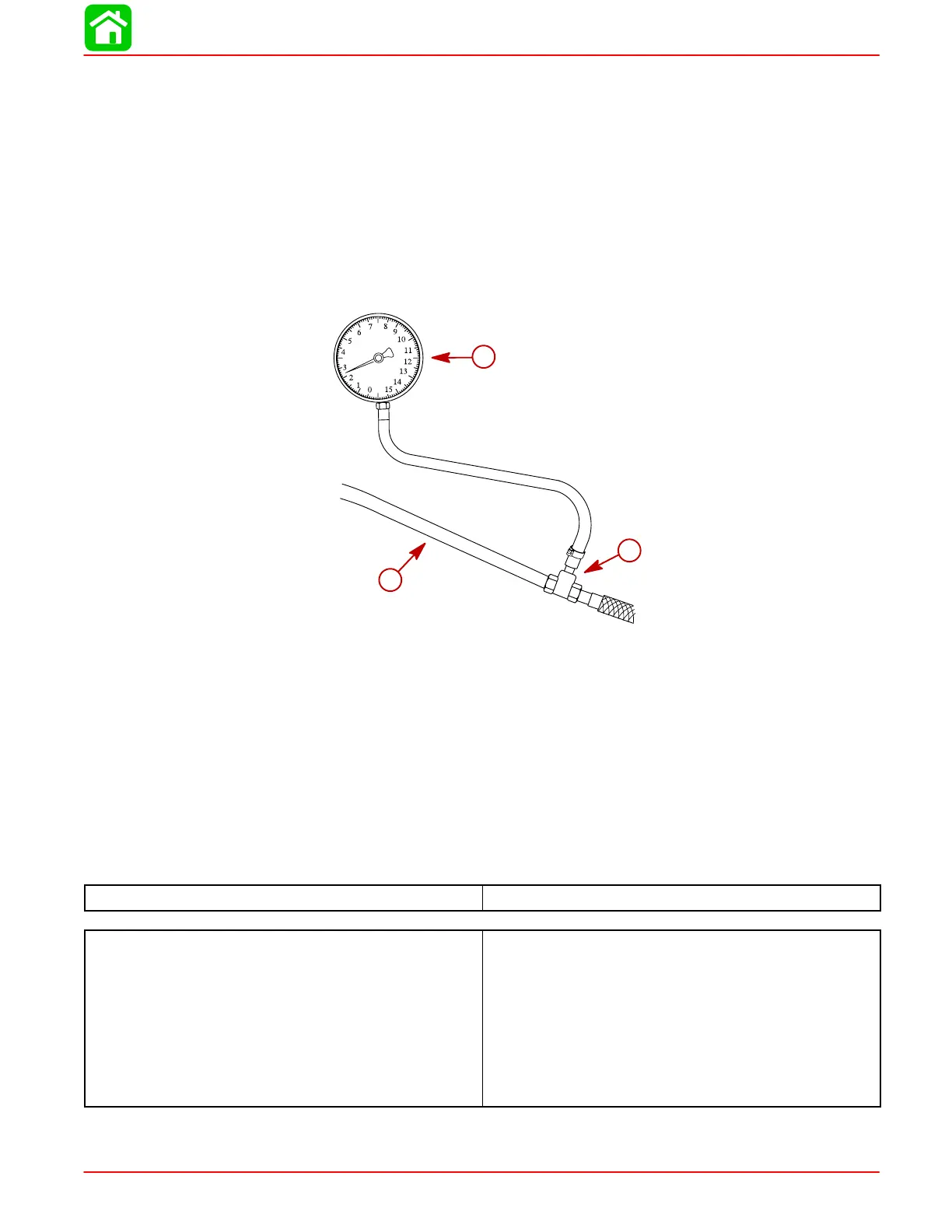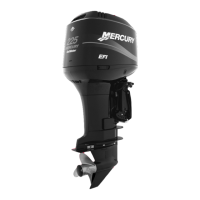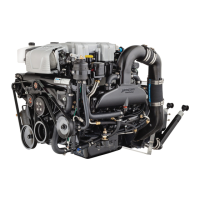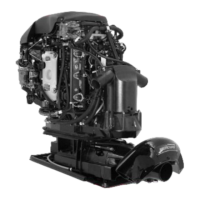FUEL PUMP
90-883728 JULY 2001 Page 3A-7
Checking Fuel Pump Lift (Vacuum)
The square fuel pump is designed to lift fuel (vertically) about 60 in. (1524 mm) if there
are no other restrictions in the system using a fuel hose that is 5/16 in. (7.9 mm) minimum
diameter. As restrictions are added, such as filters, fittings, valves etc., the amount of fuel
pump lift decreases.
Fuel pump vacuum and air bubbles in the fuel supply can be checked with a vacuum
gauge, a t-fitting and a clear piece of fuel hose. Connect the clear hose between the inlet
fitting on the pulse driven fuel pump and the vacuum gauge t-fitting; keeping the t-fitting
as close as possible to the pump. Connect the fuel line from the fuel tank to the remaining
connection on the t-fitting.
57721
a
b
c
a-Clear Hose
b-T-fitting
c-Vacuum Gauge
Vacuum Test Troubleshooting
Before proceeding with the system vacuum test, confirm that the pulse fuel pump is capa-
ble of supplying the required vacuum. To do this, start the engine, pinch off/restrict the fuel
supply hose between the vacuum gauge and fuel tank. The vacuum gauge should rise
to or exceed the maximum normal reading of 2.5 inches vacuum (mercury). If it fails to
reach this minimum number, the pump needs servicing or there is a lack of crankcase
pressure to operate the pump.
Normal Reading
Below 2.5 in. of vacuum (mercury)
Reading above 2.5 in. of vacuum (mercury) Restriction within the fuel system –
• Restricted anti-siphon valve
• Restriction within the primer bulb
• Kinked or collapsed fuel hose
• Plugged water separating fuel filter (in the
boat)
• Restriction in fuel line thru-hull fitting
• Restriction in fuel tank switching valves
• Plugged fuel tank pick-up screen

